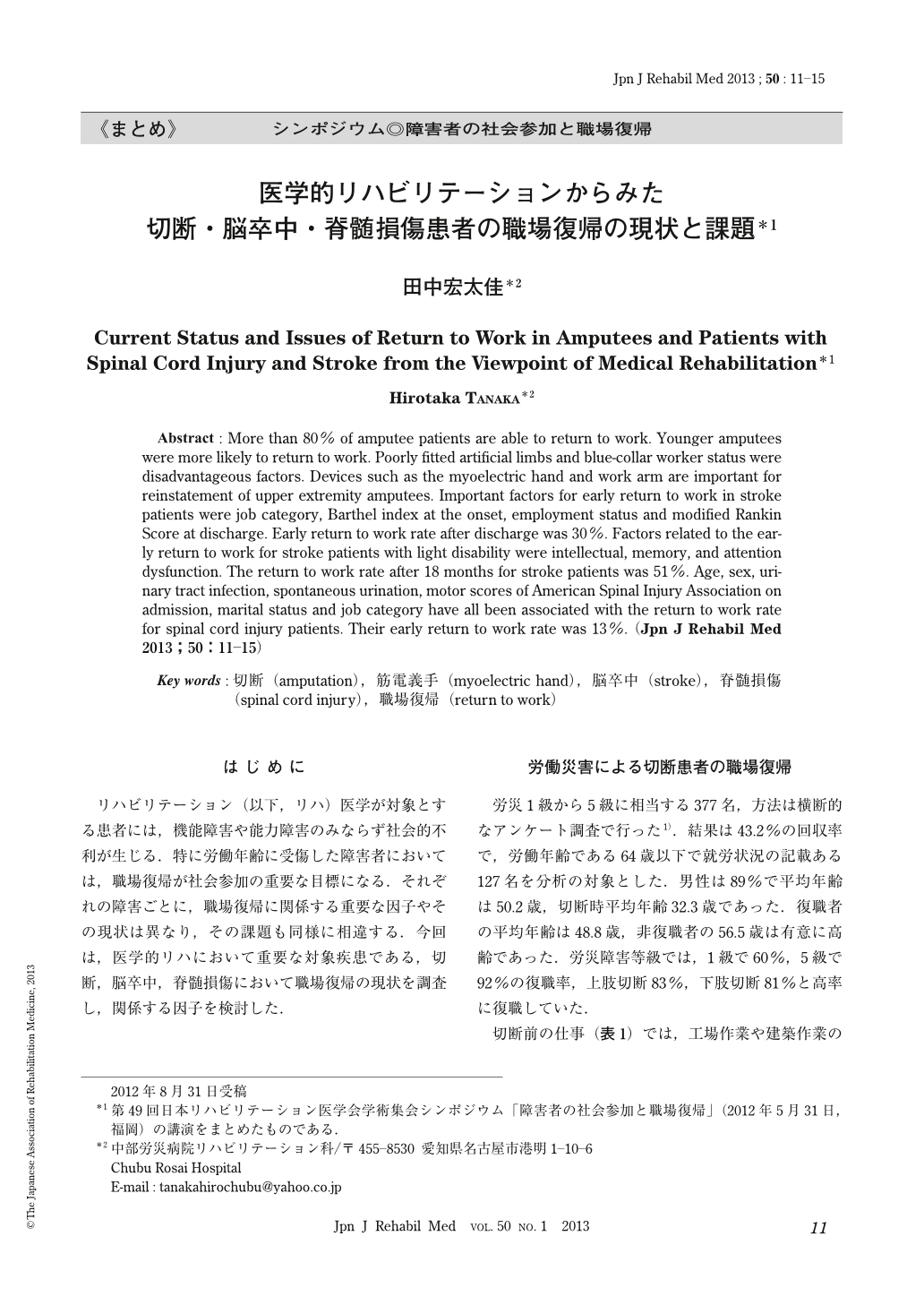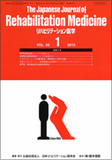Japanese
English
- 販売していません
- Abstract 文献概要
- 1ページ目 Look Inside
- 参考文献 Reference
はじめに
リハビリテーション(以下,リハ)医学が対象とする患者には,機能障害や能力障害のみならず社会的不利が生じる.特に労働年齢に受傷した障害者においては,職場復帰が社会参加の重要な目標になる.それぞれの障害ごとに,職場復帰に関係する重要な因子やその現状は異なり,その課題も同様に相違する.今回は,医学的リハにおいて重要な対象疾患である,切断,脳卒中,脊髄損傷において職場復帰の現状を調査し,関係する因子を検討した.
Abstract : More than 80% of amputee patients are able to return to work. Younger amputees were more likely to return to work. Poorly fitted artificial limbs and blue-collar worker status were disadvantageous factors. Devices such as the myoelectric hand and work arm are important for reinstatement of upper extremity amputees. Important factors for early return to work in stroke patients were job category, Barthel index at the onset, employment status and modified Rankin Score at discharge. Early return to work rate after discharge was 30%. Factors related to the early return to work for stroke patients with light disability were intellectual, memory, and attention dysfunction. The return to work rate after 18 months for stroke patients was 51%. Age, sex, urinary tract infection, spontaneous urination, motor scores of American Spinal Injury Association on admission, marital status and job category have all been associated with the return to work rate for spinal cord injury patients. Their early return to work rate was 13%.

Copyright © 2013, The Japanese Association of Rehabilitation Medicine. All rights reserved.


